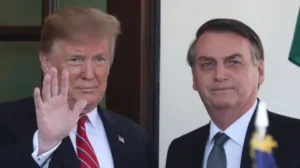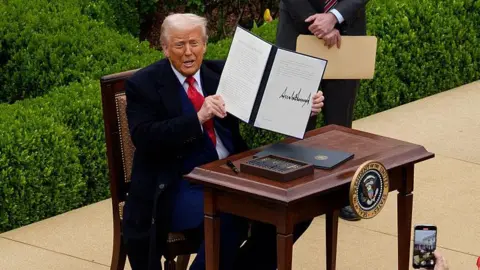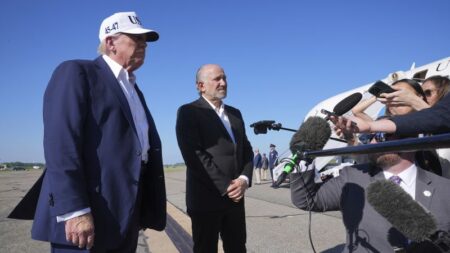In a significant move that signals a renewed approach to international trade relations, President Donald Trump announced on July 7, 2025, that the United States plans to impose a substantial 25% tariff on imports from South Korea and Japan. This decision, which is set to take effect on August 1, comes after a period of negotiations and is in line with Trump’s ongoing commitment to prioritize American manufacturing and protect local industries.
Trump shared this news via a post on his social media platforms, where he disclosed having sent letters to the leaders of both nations. The White House has indicated that similar communications will be sent to a number of other countries in the near future, coinciding with the expiration of a 90-day pause on certain aggressive tariffs that the administration had previously enacted. This renewed emphasis on tariffs appears to stand as a direct continuation of Trump’s earlier efforts to renegotiate trade agreements and impose duties on foreign goods that he believes are undermining the American economy.
The announcement of these tariffs reflects a continuity of Trump’s trade policy, particularly regarding South Korea and Japan, where the tariff rates have remained consistent with those proposed back in April. During that time, Trump had suggested tariffs of 24% on Japanese goods and 25% on South Korean products. These tariffs were announced as part of a broader initiative that Trump called “Liberation Day,” aimed at addressing trade imbalances with various countries around the world.
As the news broke, it became apparent that financial markets had reacted with a mix of concern and anticipation. Following the initial announcement of tariffs in April, there was considerable unrest and volatility in financial markets, leading to Trump temporarily suspending several import taxes to allow for further negotiations. This initial deadline for negotiations was set to expire on July 9, just before the new tariffs were to take effect.
In comments made on the same day, Treasury Secretary Scott Bessent remarked that the next few days were expected to be particularly hectic. He noted that there had been a notable shift in international negotiations as countries attempted to respond to the shifting landscape of U.S. trade policy. Bessent disclosed that his communication channels had been flooded with new offers and proposals from various nations, reflecting a desire to come to the negotiating table and potentially mitigate the impact of the imminent tariffs.
The strategy to impose tariffs is indicative of Trump’s administration’s overarching goal to protect American jobs and industries from what it views as unfair foreign competition. The tariffs on Japan and South Korea are part of a broader trend where the administration is leveraging tariffs as a key tool in its trade policy arsenal. Proponents of such tariffs argue that they can spur domestic manufacturing and job creation in the U.S. Conversely, critics assert that these measures may lead to increased costs for American consumers and could provoke retaliatory tariffs from affected countries.
In this charged atmosphere of international trade and economic policy, discussions around tariffs are poised to grow more intense in the coming weeks. As the situation develops, it is likely that both domestic and global economic stakeholders will be closely monitoring the effects of these tariffs, along with the U.S. administration’s broader trade strategy. The upcoming period is crucial not only for the relationships with South Korea and Japan but also for determining how the U.S. will navigate its trade engagements with numerous other nations in the evolving global marketplace.











